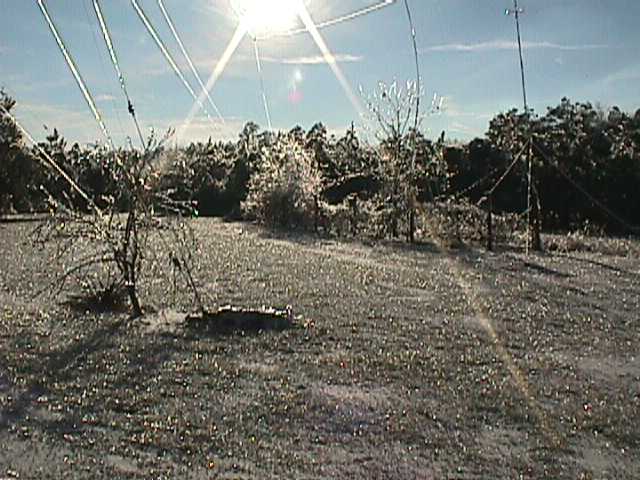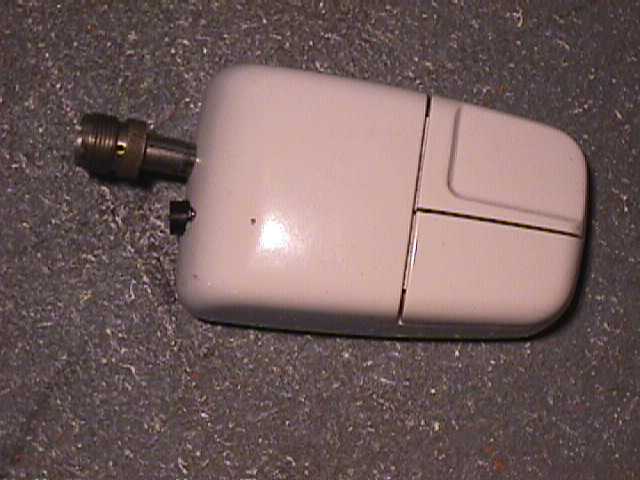All parts finally arrived
and the fun began. I got out the etching kit
which I purchased from Radio Shake
for $19 when I built the others. To make the board fit inside the
mouse, I reduced the pattern some. Also I trimmed some excess plastic
out of the mouse and retained the original micro switches for the key.
Two holes were drilled and plugs mounted in the back of the mouse for the
antenna and power. Then I traced the reduced pattern on the copper board
and etched the board. With my drill press ($49) I drilled the holes
for the components. A small drill bit was two dollars. Before installing
components, the circuit board was cleaned and shined with steel wool ($2).
The tracing was checked again and
then I began installing the largest
components first. Before I began
soldering, I waited until most of the
items are on the board. Then I checked
them again to be sure
they are in right places. Lastly,
I wound the Torrids with the enamel wire. The enamel coating was
stripped off the ends so that the solder would adhere properly.
I soldered every join carefully being sure not to overheat the joint
or component, however using enough heat that the solder flowed and would
not make a "cold solder joint." After the solder begins to flow,
I count to four with the iron on the joint and then pull it off quickly.
Carefully, I Examine the soldered
board with magnifying glass for
"bridging" where it should not be.
And I am ready for the truth test. Did you do it right?
The dummy load is then hooked to the
antenna plug. Tune the receiver to the proper frequency.
Then hook up the power to the mouse. Push the mouse button
and you may hear an oscillation on the receiver. Tune the receiver
to center of frequency. Mine was a little lower than the crystal frequency.
If you are using a power meter, you can tune the transmitter for maximum
output.
However, On the truth test,
my mouse had little oscillation. I thought maybe the crystal is not
good, so replaced that. No change. I laid it aside for a month.
Maybe the variable capacitor is not
big enough. So I changed that. No Change. I laid it aside for
two months.
 January 1999
After about five months of labor on the
thing, I thought Maybe the torrid was wound wrong. So because I had extra
ones. I wound new one tighter and with the secondary on the opposite
side instead of overlapping the primary.
January 1999
After about five months of labor on the
thing, I thought Maybe the torrid was wound wrong. So because I had extra
ones. I wound new one tighter and with the secondary on the opposite
side instead of overlapping the primary.
Victory. It works . . . it works with
better than two watts. Now to work Dave in Antarctica!
Next I need to build a matching receiver
into another mouse, from
"scratch" of course. Its mighty disappointing
when you build something and it does not work. But the best thing
to do is to lay it aside for a while and come back to it later.
When you finally get it working, and you will, you will be so excited you
will be ready to take on another project.
Now my wife just got a new cat which
likes mice and he scratches a lot. That gives me another idea. Scratch
Power! . . . Maybe a mouse with a cat antenna. Hmm, I will
think on that a while. I will use a woofer to send Scratch
up a tree with a wire. Must be the RF getting to me?

